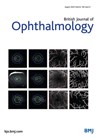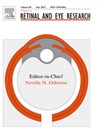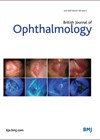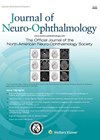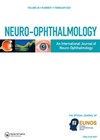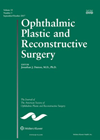
Journal Reviews
Real-world experience of using ciclosporin-A 0.1% in the management of ocular surface inflammatory diseases
This is a retrospective study of patients with ocular surface inflammatory diseases (OSIDs) treated with IKERVIS in a single centre between 2016 to 2019 with at least six months follow-up. Clinical outcome was defined as successful (resolved or stable disease),...
Detecting glaucoma with only OCT
In this review article, the authors describe a probability model based upon only OCT to detect glaucoma. They explain how normal anatomical variation can lead to false positives and applying a model to account for this improves specificity. The application...
High rate of conversion from ocular hypertension to glaucoma in subjects with uveitis
This is a retrospective study from Auckland over a 10-year period. A total of 188 eyes of 139 subjects with either ocular hypertension (OH) or uveitic glaucoma (UG) were included for analysis with a mean follow up of 9.9 years....
Using perimetry to support lesion location in the retrochiasmal visual pathway
The authors present a retrospective case review of patients with homonymous hemianopia from a 30-year period. Inclusion criteria included completion of perimetry within two years of diagnosis and a MRI brain. Data extracted from the records included demographics, diagnosis details...
Causes of photophobia in adults and children
This retrospective case review identified individuals of any age with visual discomfort using billing records over an eight-year period. These records were screened for photophobia / light sensitivity as a main symptom or documented during examination. Data including demographics, medical...
Experiences of patients and their families and the impact of Leber hereditary optic neuropathy
The authors present a qualitative study which aimed to explore the impact of Leber hereditary optic neuropathy (LHON) from diagnosis to present day on both patients and their families. Individuals with LHON and their families were purposively sampled from four...
Did the COVID-19 pandemic affect quality of life of patients newly diagnosed with intra-cranial hypertension?
Coronavirus disease 2019 (COVID-19) was identified as a global pandemic by the World Health Organization in March 2020. This article aimed to explore how the care of patients with idiopathic intra-cranial hypertension (IIH) was affected during the COVID-19 lockdown. The...
Using a driving simulator to explore the effect of visual field loss from optic disc drusen
The purpose of this study was to compare driving simulator performance of participants with visual field loss (VFL) from optic disc drusen (ODD) with a normally sighted control group and a group of individuals with glaucoma. Data on performance and...
Can coenzyme Q10 have a protective role in ethambutol-induced retinal ganglion cell toxicity
Tuberculosis (TB) is one of the most prevalent infectious diseases, especially in developing or low- income countries. Ethambutol is a widely used drug to treat TB. Ethambutol can cause visual disturbance including ethambutol toxic optic neuropathy (ETON). ETON is one...
Sub-clinical detection methods in multiple sclerosis
Visually symptomatic multiple sclerosis (MS) provides only part of the required information to assist in understanding the disease. Recently, researchers have concentrated their efforts on diagnosing MS cases in the subclinical period. The aim of this paper was to assess...
Case report review of children with septo-optic dysplasia and optic nerve hypoplasia
Septo-optic dysplasia (SOD) and optic nerve hypoplasia (ONH) cause congenital visual impairment. Their aetiology is mostly unknown. The authors aim was to investigate the prevalence of specified ophthalmological features in patients with these disorders. These features included impaired visual acuity,...
Pupil abnormalities after orbital surgery
This is a retrospective review of 287 patients who underwent removal of an orbital cavernous haemangioma (cavernous venous malformation), to ascertain the incidence of surgically induced pupillary abnormalities. Forty-four patients had lesions removed from the anterior or extraconal orbit, none...

